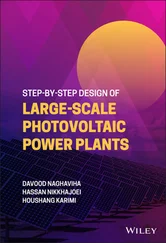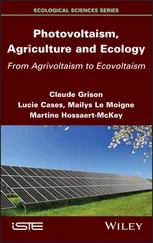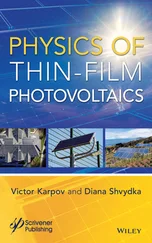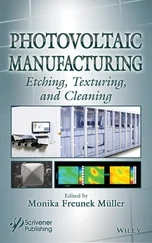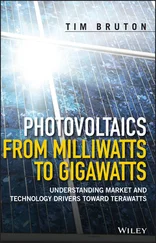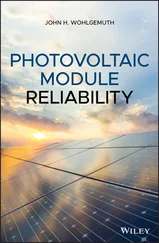10 10. https://news.wisc.edu/power-walk-footsteps-could-charge-mobile-electronics/, Feb. 8, 2016.
11 11. https://www.instructables.com/id/Power-Generating-Shoe/, 2009.
12 12. Wang, J. and Liang, J., Energy Harvesting from Horizontal and Vertical Backpack Movements During Walking, in: Proc. of the IEEE/ASME International Conference on Advanced Intelligent Mechatronics (AIM), Auckland, New Zealand, July 9–12, pp. 798–803, 2018.
13 13. Park, H., Lee, D., Park, G., Park, S., Khan, S., Kim, J., Kim, W., Energy harvesting using thermoelectricity for IoT (Internet of Things) and E-skin sensor. J. Phys. Energy, 1, 042001, 2019.
14 14. Zu, D. and Beeby, S., Kinetic energy harvesting, in: Energy Harvesting Systems – Principles and Applications, T.J. Kaźmierski and S. Beeby (Eds.), pp. 1–77, Springer, 2011.
15 15. Liu, V., Parks, A., Talla, V., Gollakota, S., Wetherall, D., Smith, J.R., Ambient backscatter: Wireless communication out of thin air, in: Proc. of ACM SIGCOMM 2013, pp. 39–50, August 2013.
16 16. Ma, Y., Luo, Z., Steiger, C., Traverso, G., Adib, F., Enabling deep-tissue networking for miniature medical devices, in: Proc. of ACM SIGCOMM 2018, pp. 417–431, August 2018.
17 17. Ko., W.H., Piezoelectric energy converter for electronic implants, July 15 1969. US Patent 3,456,134.
18 18. Dagdeviren, C. et al., Conformal piezoelectric energy harvesting and storage from motions of the heart, lung, and diaphragm. PNAS, 111, 5, 1927–1932, 2014.
19 19. Zebda, A., Alcaraz, J.-P., Vadgama, P., Shleev, S., Minteer, S.D., Boucher, F., Cinquin, P., Martin, D.K., Challenges for successful implantation of biofuel cells. Bioelectrochemistry, 124, 57–72, 2018.
20 20. Warneke, B., Last, M., Liebowitz, B., Pister, K.S.J., Smart dust: Communicating with a cubic-millimeter computer. IEEE Comput., 34, 1, 44–51, 2001.
21 21. Lee, Y. et al., A modular 1 mm3 die-stacked sensing platform with low power I2C inter-die communication and multi-modal energy harvesting. IEEE J. Solid-State Circuits, 48, 1, 229–243, 2013.
22 22. Starner, T., Kirsch, D., Assefa, A., The locust swarm: An environmentally-powered networkless location and messaging system, in: Proc. of the ISWC 1997, pp. 169–170, 1997.
23 23. Mayton, B., Dublon, G., Russell, S., Lynch, E.F., Haddad, D.D., Ramasubramanian, V., Duhart, C., Davenport, G., Paradiso, J.A., The networked sensory landscape: Capturing and experiencing ecological change across scales. Presence: Teleoperators Virtual Environ., 26, 2, 2017.
24 24. Reich, N., van Sark, W. G. J. H. M., Alsema, E.A., Kan, S.Y., Silvester, S., van der Heide, A., Lof, R.W., Schropp, R.E.I., Weak light performance and spectral response of different solar cell types, in: Proc. of the 20th EUPVSEC, pp. 2120–2123, 2005.
25 25. Kurs, A., Karalis, A., Moffat, R., Joannopoulos, J.D., Fisher, P., Soljačić, M., Wireless power transfer via strongly coupled magnetic resonances. Science, 317, 5834, 83–86, 2007.
1 Email: joep@media.mit.edu
2 Introduction to Micro Energy Harvesting
Monika Freunek (Müller)
BKW AG, Bern, Switzerland
AbstractTrillions of IoT edge nodes are expected to be installed worldwide in the near future. At the same time, many nations have set ambitious goals in order to reduce the amount of required electric energy. How do we want to power these electronic devices? A promising approach is the use of ambient energy by micro generators. This concept is also known as micro energy harvesting. The following chapter provides an introduction to micro energy harvesting and its history, design challenges, and future work. Different sources of energy and available conversion mechanisms are discussed. Principles and challenges of miniaturized devices are introduced.
Keywords:Micro energy harvesting, micro energy scavenging, internet of things, wireless sensor nodes, edge nodes, energy conversion
2.1 Introduction and History
In 2018, McKinsey identified 104 use cases for IoT applications in 11 sectors with 3000 companies actively working on them [1]. The authors reported a potential market value of $200 billion USD until 2025, and trillions of IoT edge nodes are expected to be installed worldwide in the near future. At the same time, many nations have set ambitious goals in order to reduce the amount of required electric energy.
How do we want to supply edge nodes with energy? A promising approach is the use of ambient energy in order to power electronic systems. This concept is also known as micro energy harvesting. The following chapter introduces micro energy harvesting and its history, the challenges in its design and future work ahead. Different sources of energy and available conversion mechanisms are discussed. The aim of this chapter is to set indoor photovoltaics in the broader frame of Micro Energy Harvesting in general. An introduction to conversion principles, achievable output power, and literature suggestions for further reading are provided for each type of converter. The principles of miniaturized and indoor photovoltaic devices are the core topic of this book with a general discussion of the theoretical foundations in Chapter 3.
2.1.1 Brief History of Electric Generators and Loads
The use of ambient energy in human operated applications is far older than the electric grid. Wind- and watermills have been constructed and operated by humans over thousands of years. Based on the work of Bélidor [2], the first electrodynamic hydro generators were developed and applied for local grids, such as by the US Grand Rapids Electric Light and Power Company in 1880 [3].
The following decade mainly focused on large-scale electrification in both appliances and connections. According to the World Bank, 89% of the world was considered electrified in 2017 [4]. Grids were generally constructed as alternating current (AC) grids. Especially after the introduction of nuclear plants, electric appliances were mostly designed for an abundance of power. With the progress in semiconductor research, transistor elements were invented in 1947 [5]. This enabled the development of electronic products based on semiconductor elements, such as silicon. Silicon with its bandgap of 1.12 eV has an open circuit voltage of around 0.6 V. A serial connection of many silicon elements then yields an operating DC voltage around 3 to 12 V, which can be provided by batteries. Therefore, these devices were and are preferably battery powered.
Both the small scale and the low required power of electronic devices enabled miniaturization of products. In 1997, Chu et al. demonstrated a cubic corner reflector below the centimeter scale [6]. This was the beginning of the Smart Dust project [7], which aimed at fabricating distributed wireless sensor nodes in a microscale. With a similar approach, DARPA launched a program in order to developed miniaturized wireless sensor nodes [8].
2.1.2 Forms of Energies and Energy Converters
In order to do work on an object, exergy needs to be available. If a system is to use the exergy of another system, which might be surrounding energy or a converter, the systems have to be coupled. The form of coupling between energies of the same form or between different types of energy are called weak and strong. There are nine types of energies [9], and in principle, all of them can be used for energy harvesting:
– gravitational
– kinetic
– heat
– elastic
– electric
– chemical
– radiation
– nuclear
– mass.
Besides the use of mass and gravitational energy, each form of energy has been used in micro harvestings research so far. Reviews on the principles, the history and the current state-of-the-art in industry and research have been provided by various authors, such as [10–12]. As this book focuses on indoor applications, this chapter discusses the level and usability of these types of energy for indoor applications. Some of the most important references are provided for further reading, and principles and examples of demonstrated systems or commercially available devices are included where possible. As most generators aim at converting energy from ambient energy to electric energy, the converters discussed in this chapter will focus on those.
Читать дальше





